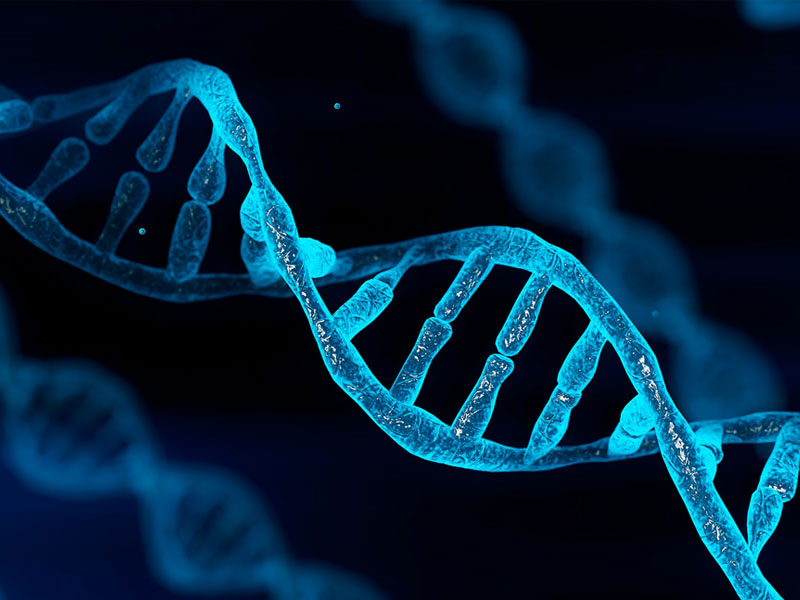UK becomes first to approve Casgevy genetic therapy for blood disorders
SOURCE: HTTPS://INTERESTINGENGINEERING.COM/
NOV 17, 2023
New Gene-Editing Technique Offers Scientists Ability to “Turn On” Enzymes
SOURCE: MIRAGENEWS.COM
NOV 03, 2021

PHILADELPHIA – Targeted mutations to the genome can now be introduced by splitting specific mutator enzymes and then triggering them to reconstitute, according to research from the Perelman School of Medicine at the University of Pennsylvania. Led by graduate student Kiara Berríos under the supervision of Rahul Kohli, MD, PhD, an associate professor of Infectious Diseases at Penn, and Junwei Shi, PhD, an assistant professor of Cancer Biology, the investigations uncovered a novel gene editing technique that offers superior control compared to other existing techniques and has the potential to be used in-vivo. The technique has been patented, and the research is published in the latest issue of Nature Chemical Biology.
Base editors are one of the latest and most effective ways to achieve precise gene editing. In DNA targeted by base editors, C:G base pairs in DNA can be mutated to T:A or A:T base pairs can be turned to G:C. The base editors use CRISPR-Cas proteins to locate a specific DNA target and DNA deaminase enzymes to modify and mutate the target. Nevertheless, there was no way to trigger mutations at specific times or keep the editor in check to prevent undesired mutations.
The Penn researchers found that DNA deaminases can be divided into two inactive pieces, which can then be put back together using a small cell-permeable molecule called rapamycin. The new split-engineered base editors (seBEs) system can be introduced and lay dormant within a cell until the small molecule is added, at which point the base editing complex can be rapidly “turned on” to alter the genome.
“Our newly created split-engineered base editors really offer new potential for both research and therapeutics,” Kohli said. “Since we can control the time mutations are made, there is a possibility to use these seBEs in vivo to model diseases by altering a gene, similar to how scientists control the timing of gene knockouts, and even potentially someday offer clinicians the ability to control editing of a patient’s genes for treatment purposes.”
“Splitting DNA deaminase can also work outside of base editors,” said Shi. “As a cancer researcher, I see this technique as having potential in controlling genetic changes that cause cancer development and growth. It could also be used to identify vulnerabilities in cancer cells.”
Kohli’s and Shi’s labs plan to build on this research by applying controllable genome editing to cell-based screen research and by adding a layer of spatial control to accompany temporal control. A strength of the researchers’ approach is that the controllable split enzyme system can also be partnered with other new developments in the rapidly expanding CRISPR/Cas field to newly gain regulatory control over these various base editing strategies.
/Public Release. This material from the originating organization/author(s) may be of a point-in-time nature, edited for clarity, style and length. The views and opinions expressed are those of the author(s).View in full here.
Tags:cancer research, Chemical, DNA, gene-editing, infectious diseases, medicine, Penn Medicine, pennsylvania, Professor, research, Scientists, technique, therapeutics, treatment, trigger, university, University of Pennsylvania
LATEST NEWS
Augmented Reality
Hi-tech smart glasses connecting rural and remote aged care residents to clinicians
NOV 20, 2023
WHAT'S TRENDING


Data Science
5 Imaginative Data Science Projects That Can Make Your Portfolio Stand Out
OCT 05, 2022

SOURCE: HTTPS://INTERESTINGENGINEERING.COM/
NOV 17, 2023
SOURCE: HTTPS://GENETICLITERACYPROJECT.ORG/
SEP 05, 2023
SOURCE: HTTPS://WWW.SCIENCEDAILY.COM/
AUG 07, 2023
SOURCE: HTTPS://WWW.SCIENCEDAILY.COM/
JUL 24, 2023
SOURCE: HTTPS://NEWS.MIT.EDU
JUL 20, 2023
SOURCE: BIOSPACE.COM
OCT 27, 2022